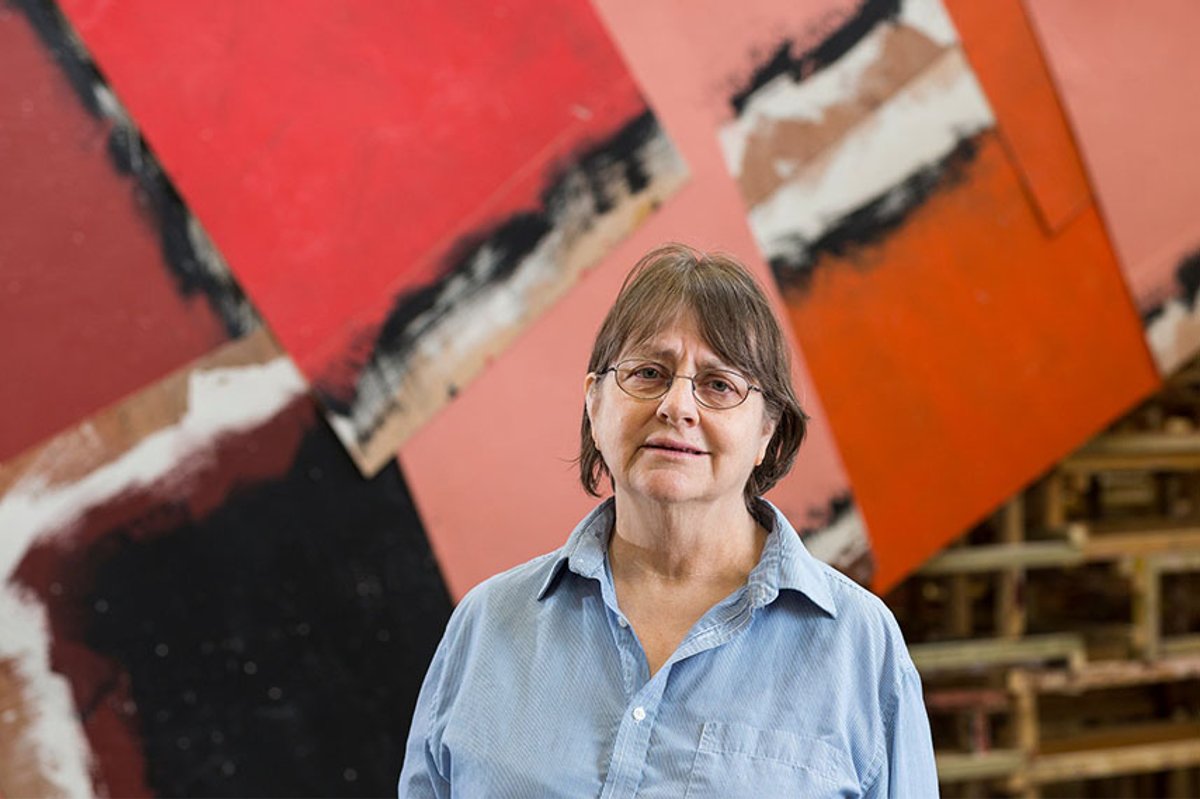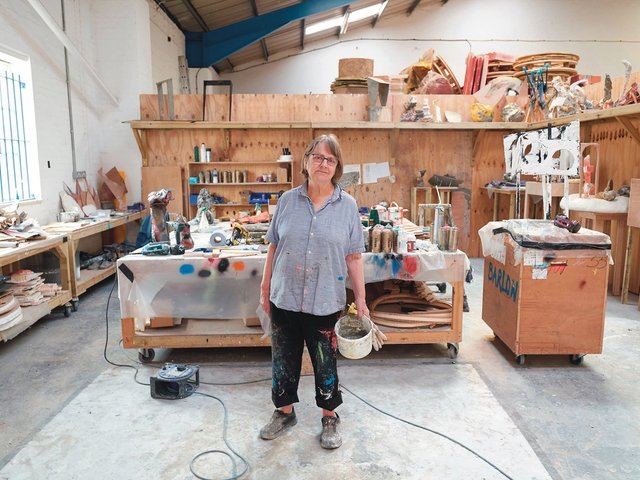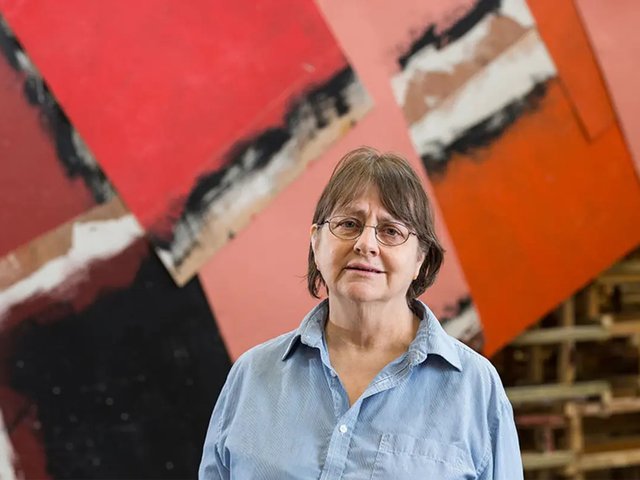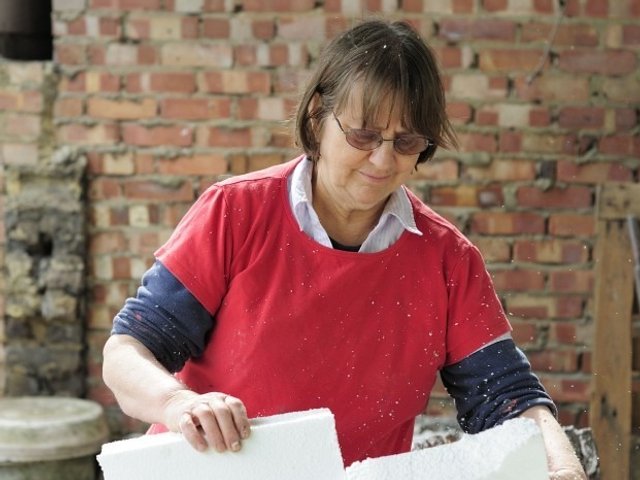The UK sculptor Phyllida Barlow—long respected among British artists having taught at London’s Slade School of Fine Art for more than 40 years—has died, aged 78.
Her death was confirmed by her gallery, Hauser & Wirth, which says in a statement that “over the course of almost 60 years, she embraced humble materials to create sculpture and installations that defied the rules of gravity, balance and symmetry. Her work interrupts and invades the space around it, a strategy through which Phyllida playfully guided audiences to become daring explorers.”
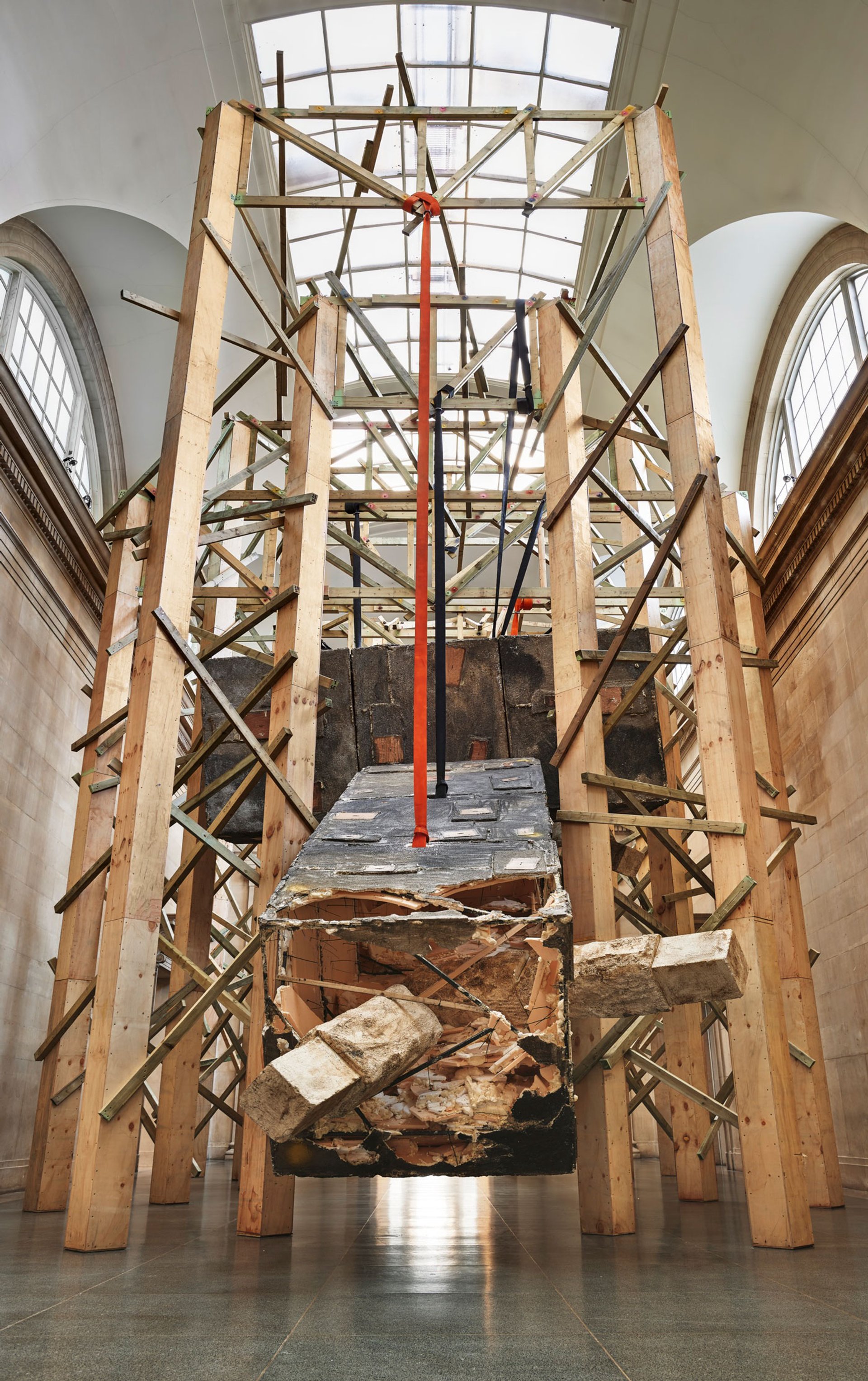
Phyllida Barlow, installation view of dock, part of the Duveen commission, Tate Britain, 2014 ©2014 Alex Delfanne; courtesy of the artist and Hauser & Wirth
Isabella Maidment, senior curator at the Hepworth Wakefield, paid homage on Twitter, saying: “Inspiring educator, brilliant artist, wonderful woman.” A Tate statement says meanwhile: “She was the 'youngest-minded' of senior artists, working between sculpture and painting, continuously experimenting in her practice on a grand scale. All the while she gave her knowledge generously to generations of students, and countless curators at home and abroad. She was deeply engaged with histories of art as an artist and teacher and was always curious about the unfamiliar.”
Numerous other tributes were paid. Andrew Renton, professor of curating at Goldsmiths college, wrote: "There are generations of artists who owe her so much. But also generations of teachers for whom she was more than a role model. She represented a standard of engagement to which we could only aspire."
Inspiring educator, brilliant artist, utterly wonderful woman. Dame Professor Phyllida Barlow (1944-2023) pic.twitter.com/Pqv3NM1hcF
— Dr Isabella Maidment (@driszzyiszzy) March 13, 2023
Barlow was born in Newcastle upon Tyne in 1944. Her mother, Brigit Ursula Hope Black, was a writer and her father, Erasmus Darwin Barlow, was a psychiatrist. The sculpture Shedmesh, completed in 1975 for the group exhibition Contemporary Painting and Sculpture at the Camden Art Centre in London, and Fill (1983)—created by stacking materials in the disused Tout Quarry in Dorset—are among her key early works.
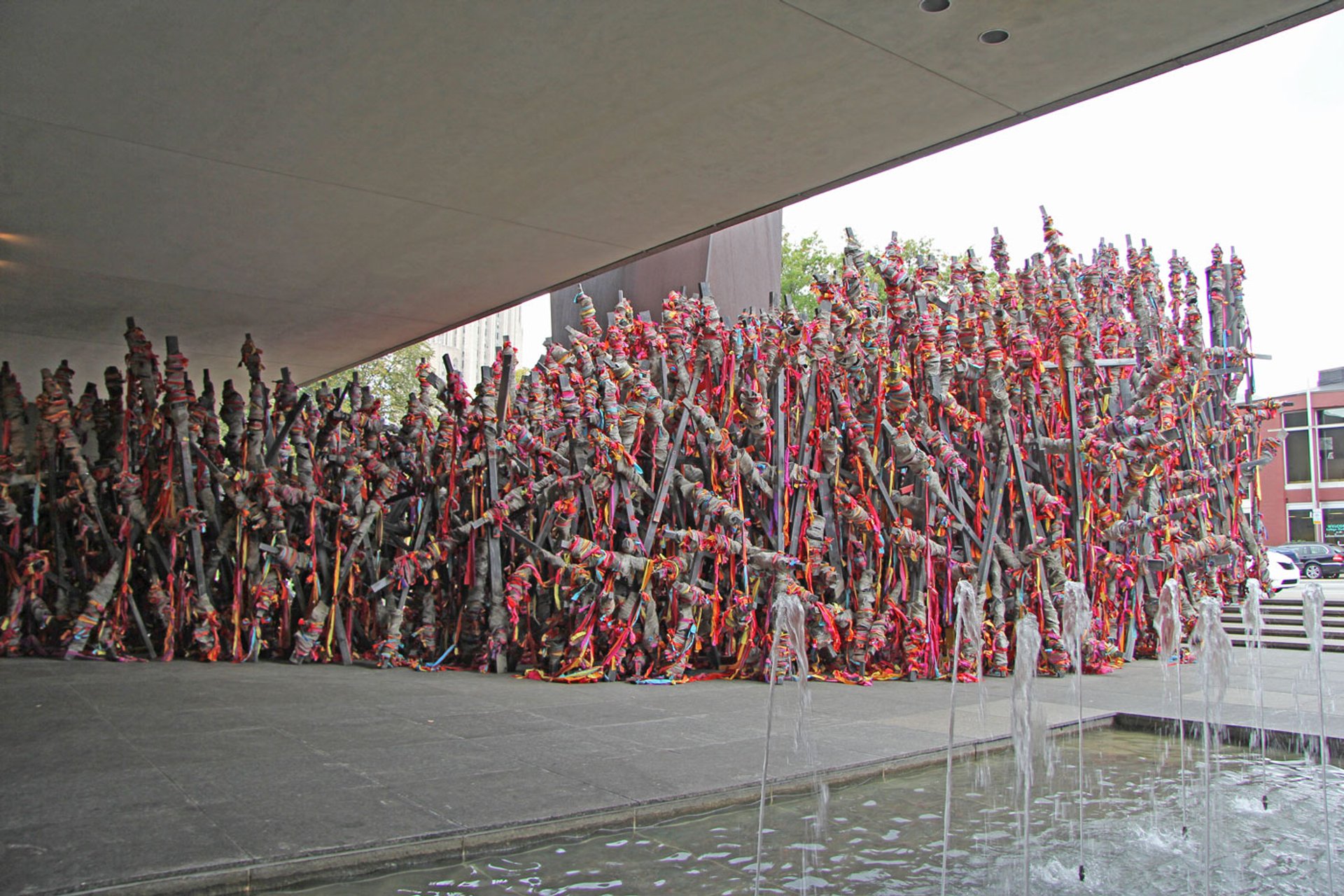
Phyllida Barlow, installation view, TIP, Carnegie International, Pittsburgh, 2013 Courtesy of the artist and Hauser & Wirth
She attended the Chelsea College of Art in London (1960-63) and the Slade School of Fine Art (1963-66). She taught at both schools and was Professor of Fine Art and Director of Undergraduate Studies at the latter until 2009 where her students included Rachel Whiteread, Douglas Gordon and Tacita Dean.
Barlow said of her teaching: “I am aware that I had the benefits of constant art school employment, in its earliest incarnation as a liberal patron to artists when there was no need to account for your work other than through your contributions as an artist.”
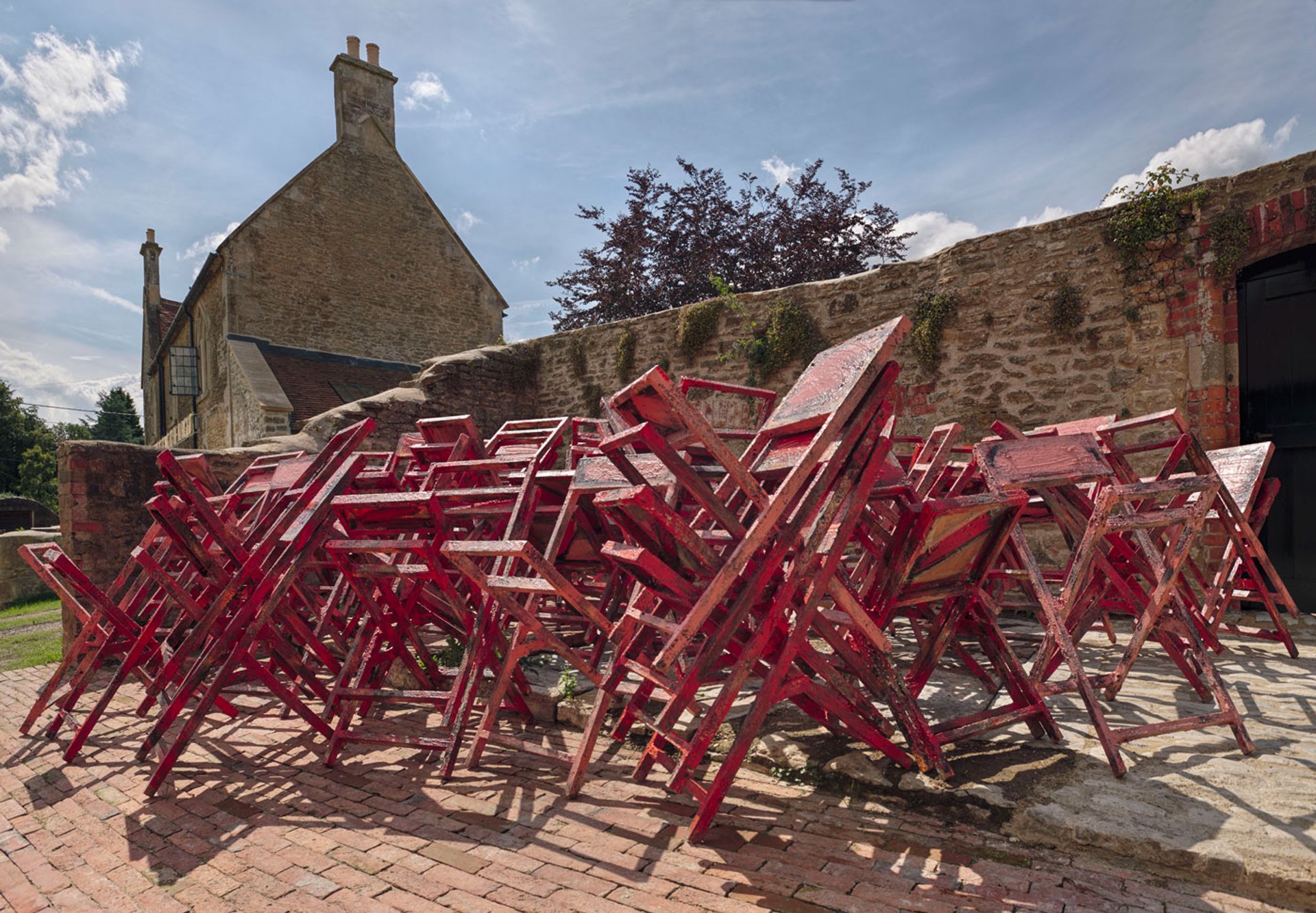
Phyllida Barlow, untitled stacked chairs, GIG, Hauser & Wirth Somerset, 2014© 2014 Alex Delfanne; courtesy of the artist and Hauser & Wirth
Her enhanced international profile, boosted by a string of high-profile exhibitions, coincided with her retirement from teaching in 2009. In 2011, she was made a Royal Academician, the year she joined Hauser & Wirth gallery. In 2012, Barlow had solo shows at the New Museum in New York and the Henry Moore Institute in Leeds, UK. In 2013, she was included in the Carnegie International at the Carnegie Museum of Art in Pittsburgh.

Phyllida Barlow, installation in her exhibition demo at Kunsthalle, Zurich, 2016-17 Annik Wetter; courtesy of the artist and Hauser & Wirth
In 2014, her large-scale installation, dock (2014), filled the Duveen Galleries at Tate Britain in London. “This output is especially prodigious given that Barlow’s modus operandi is to make unique sculptures-cum-structures for each location using vigorously manipulated commonplace materials—builders’ planks, sheets of plywood, plastic sheeting, plaster, scrim—on an epic scale,” wrote Louisa Buck who interviewed Barlow for The Art Newspaper in 2014.
Barlow said at the time: “I have been asked, ‘Why is your work so big?’ And I think the answer is to do with reach and stretch and going to spaces where I can’t get to and where we don’t usually go to in terms of looking or seeking out.”
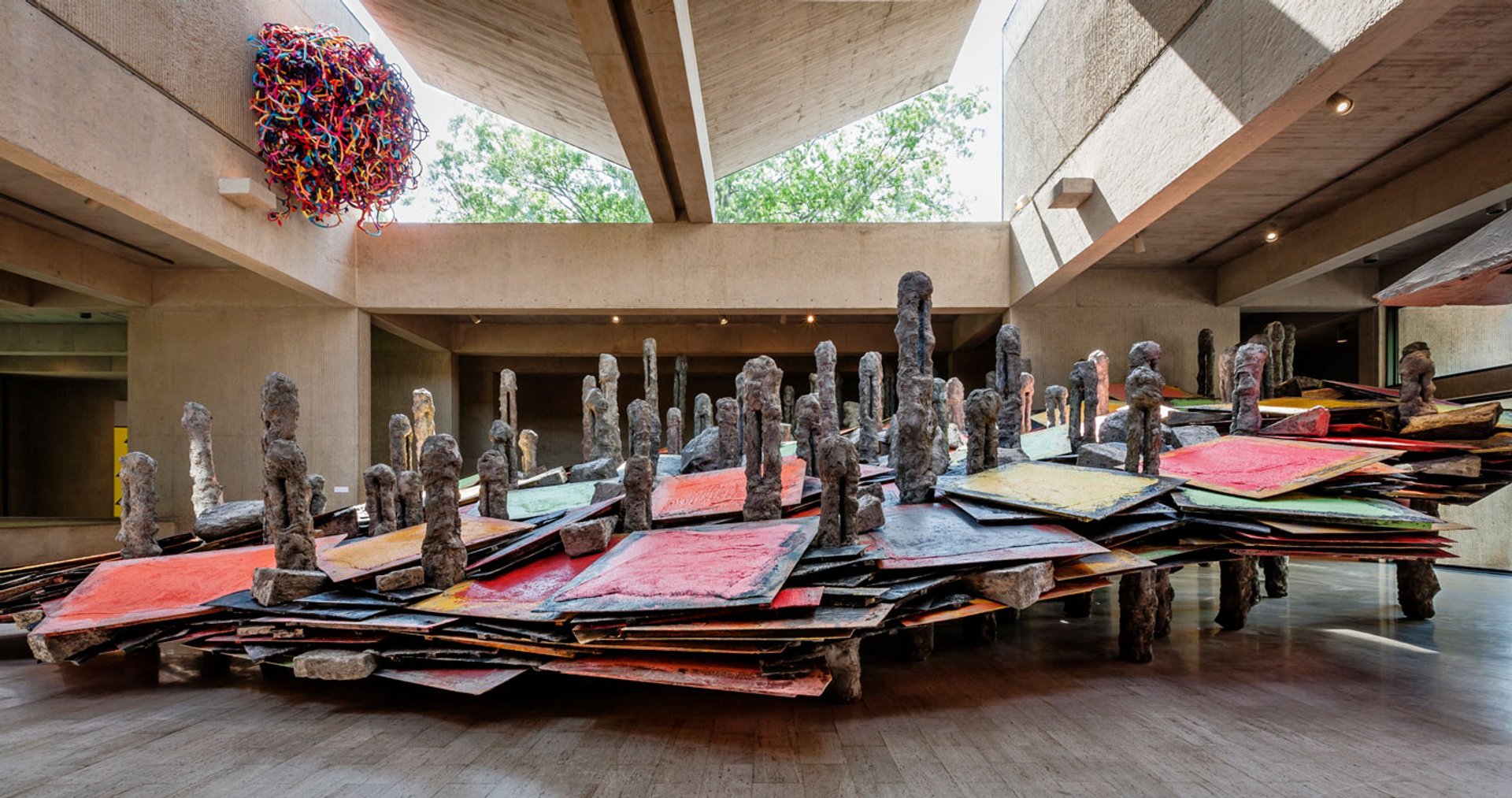
Phyllida Barlow, installation view, Phyllida Barlow scree, Des Moines Art Center, 2013 Paul Crosby; courtesy of the artist and Hauser & Wirth
In 2017, Barlow represented the UK at the Venice Biennale with the vast sculptural installation known as Folly. The critic Mark Hudson, writing in The Telegraph, said: “At a time when the interpretation of art focuses increasingly on quasi-literary ‘themes’ (the notion that Damien Hirst’s work is ‘about’ sex and death being a prime example), Barlow regards herself as a ‘formalist’: her work is ‘about’ processes and materials. Folly is a marvellously comic and inventive divertissement that throws up all kinds of visual jokes and quite profound resonances about scale and endurance, mortality and decay.”
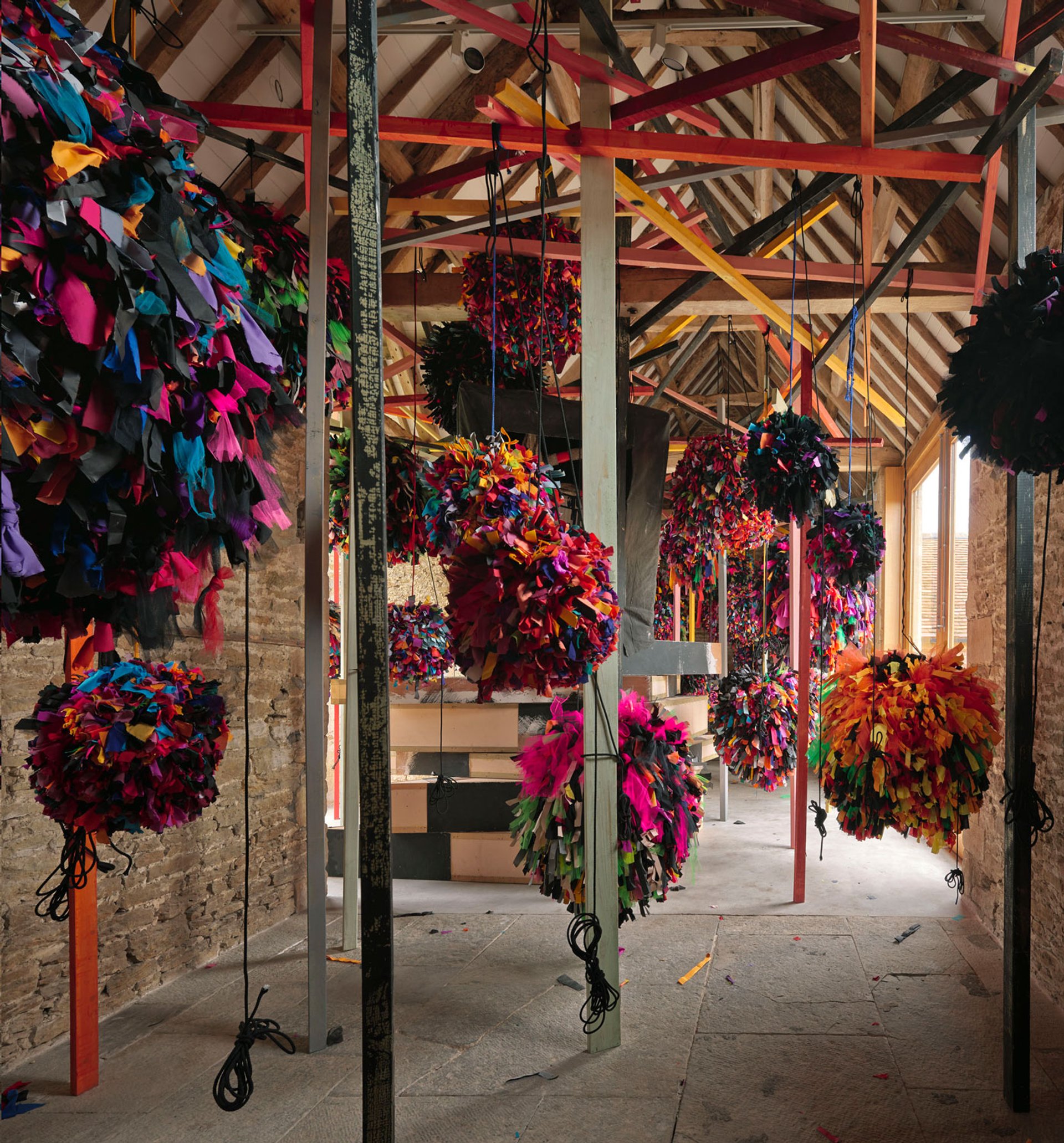
Phyllida Barlow, untitled, GIG, Hauser & Wirth Somerset, 2014 © 2014 Alex Delfanne; courtesy of the artist and Hauser & Wirth
Asked why she plumped for the Folly title, she told The Art Newspaper: “It’s playing on the whole idea of the building itself being very folly-like, but also the idea of a folly as a sort of human escapade. Also folly as in the sense of mirage, which actually was also one of the titles I considered.”
Phyllida Barlow; born Newcastle upon Tyne 4 April 1944; RA 2011, CBE 2015, DBE 2021; married Fabian Benedict Peake (three daughters, two sons); died 13 March 2023


